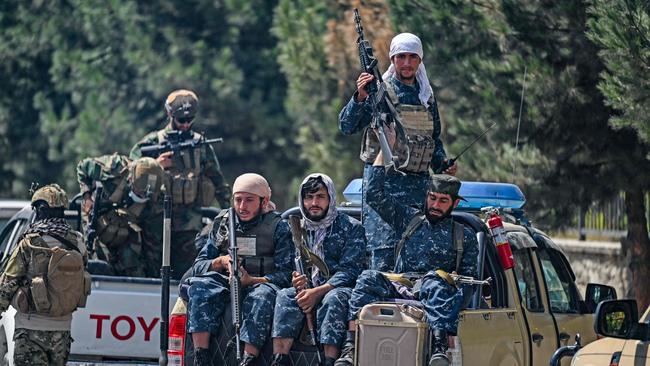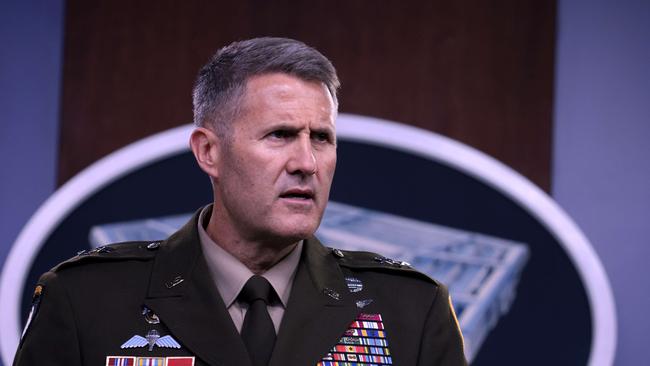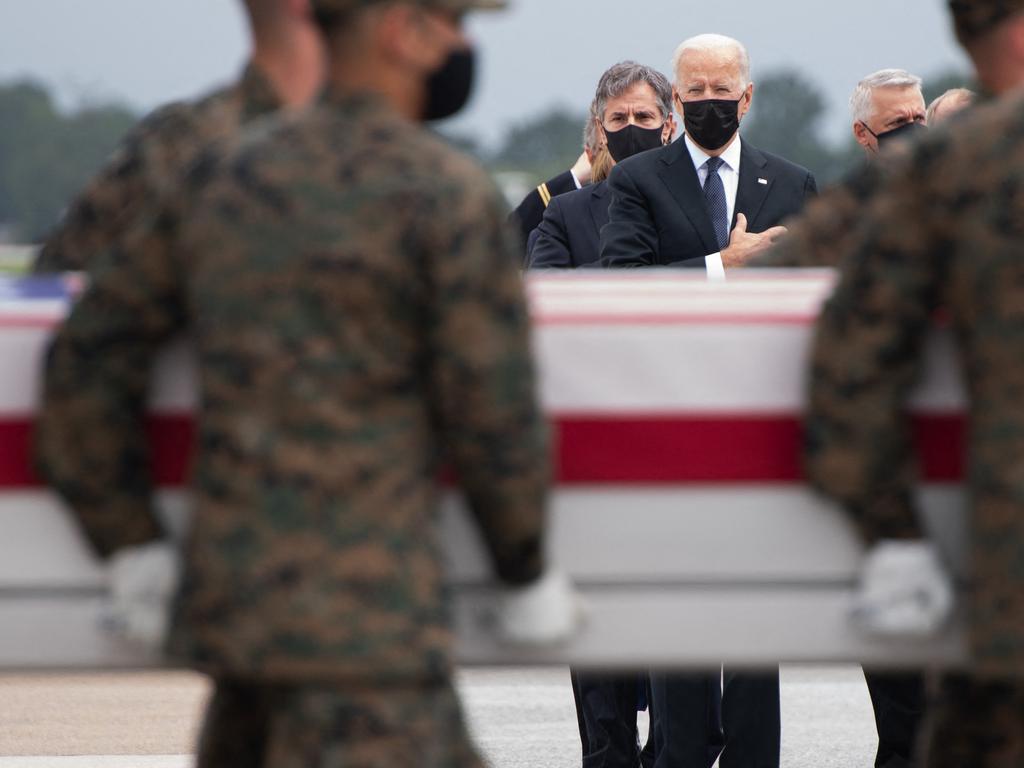Last US troops leave Afghanistan after nearly 20 years
A final flight of Americans has departed Kabul just weeks shy of the 20th anniversary of a war that claimed the lives of 2461 US troops and cost $US824.9bn.
A U.S. military aircraft carried the last American troops out of Afghanistan, marking the formal end of the longest war in U.S. history but leaving hundreds of Americans and tens of thousands of Afghans to face a future of uncertainty and danger.
The final U.S. withdrawal came a day before the Aug. 31 deadline set by President Biden, an exit under the persistent threat of terrorist attacks that already had claimed the lives of 13 American service members and more than 200 Afghans, killed in a suspected Islamic State suicide bombing at the Kabul airport on Thursday.
Despite assurances to the contrary by Mr. Biden and other top administration officials, Americans and Afghan allies were left behind, though the State Department couldn’t provide precise figures.
The U.S. earlier Monday said it was working to assist hundreds of Americans still there. Advocacy groups said as many as 60,000 Afghan interpreters, drivers and others who assisted the U.S. military, CIA and U.S. diplomatic personnel over the years, along with their families, remain in the country, at risk of retribution from the Taliban.
The last flight of U.S. military personnel departed Afghanistan on Monday, just weeks shy of the 20th anniversary of what then-President George W. Bush called the first war of the 21st century.
Mr. Bush launched the conflict following the terrorist attacks of Sept. 11, 2001, to overthrow the Taliban, who had harbored the al Qaeda terrorists who planned and executed the attacks on U.S. soil. The war continued through the presidencies of Barack Obama and Donald Trump, who both tried but failed to end it.

For President Biden, the end of U.S. involvement in Afghanistan was a principal 2020 campaign promise and a position widely supported by American voters who long ago had tired of the war. But the chaotic withdrawal triggered the biggest foreign-policy crisis of Mr. Biden’s young presidency and prompted criticism of his decision to withdraw as well as the planning and execution of the operation.
Pentagon officials said Monday that the last cargo flights lifted out the thousands of U.S. troops deployed to the airport in Kabul to conduct an emergency airlift of the U.S. Embassy staff and thousands of Afghans, a task comparable to the evacuation of Saigon in 1975.
Although it was the longest military conflict in U.S. history, Afghanistan frequently was a forgotten war, overshadowed by the U.S. invasion of Iraq in 2003 and the subsequent rise of the Islamic State extremist group.
In all, 2,461 U.S. troops were killed, including 13 in the past week, in a U.S. campaign that began Oct. 7, 2001, as an effort to topple the Taliban for harboring al Qa’ida. At the war’s peak, in 2010, the U.S. had more than 100,000 troops in Afghanistan. The following year, the U.S. killed al Qaeda leader Osama bin Laden, who had been living in Abbottabad, Pakistan.
Through the years, U.S. forces - backed by other agencies, contractors and nongovernmental organszations - worked to build a democratic Afghan state defended by a 300,000-plus strong security force. But that government and those forces dissipated less than four months after the U.S. began its May withdrawal, enabling the Taliban to return to power.
The fact that Afghanistan fell within weeks to the very group the U.S. unseated represented a crushing defeat to many veterans and officials after a fight that spanned generations.
By U.S. government spending estimates, the war cost taxpayers $US824.9 billion or, on average, $3.4 billion a month. Scholars such as those at Brown University’s Costs of War project estimate that the war’s total costs, like caring for more than 20,000 injured veterans, have already risen into the trillions.
The military evacuation began in earnest after the collapse of the Afghan government and its security forces Aug. 15. U.S. commanders coordinated with Taliban commanders to secure the airport perimeter and control access after the initial days were marred by scenes of people mobbing the airport and clinging to departing aircraft, some falling to their deaths.
The airlift effort was nearly unprecedented in scale, scope and danger, moving more than 122,000 Americans, third-country citizens and Afghans in 15 days.

The evacuation also was one of its most deadly operations of the war for the U.S. military. On Thursday, 11 Marines, a soldier and a sailor were killed along with nearly 200 Afghans after a suicide bomber detonated himself, as the troops were screening thousands of Afghans trying to get a flight out of the country. It was the deadliest day of the last decade for the U.S. military in Afghanistan.
The threat of attacks lasted until the final hours of the U.S. withdrawal. The U.S. military said five rockets were fired at the airport Sunday evening. One of the rockets was intercepted by counter-missile weapons, while three landed outside the airport and another landed inside, though without causing any casualties.
Earlier that day, the Pentagon said it hit a vehicle aiming for the airport and laden with explosives. The U.S. military said it killed several suicide bombers inside the car, but many Afghans on the ground said the strike killed 10 civilians, including several children.
Recent polls have shown majorities of Americans approve of the decision to withdraw but disapprove of Mr. Biden’s handling of the exit.
Biden administration officials had intended to spend the month of August touting Mr. Biden’s accomplishments and building support for the bipartisan infrastructure package and the proposed $3.5 trillion budget plan. But the chaotic exit has overshadowed the president’s legislative agenda.
Democrats believe that priorities for voters will shift ahead of next year’s midterm elections, with issues like Covid-19 and the economy remaining a priority in voters’ minds and frustrations with the Afghanistan exit dissipating over time. The party holds a narrow majority in the House and controls the evenly divided Senate.
Lawmakers from both parties have called for hearings on Capitol Hill once the withdrawal is complete. Republicans are pushing for those hearings to happen as soon as possible once Congress returns in mid-September.
The Wall Street Journal







To join the conversation, please log in. Don't have an account? Register
Join the conversation, you are commenting as Logout